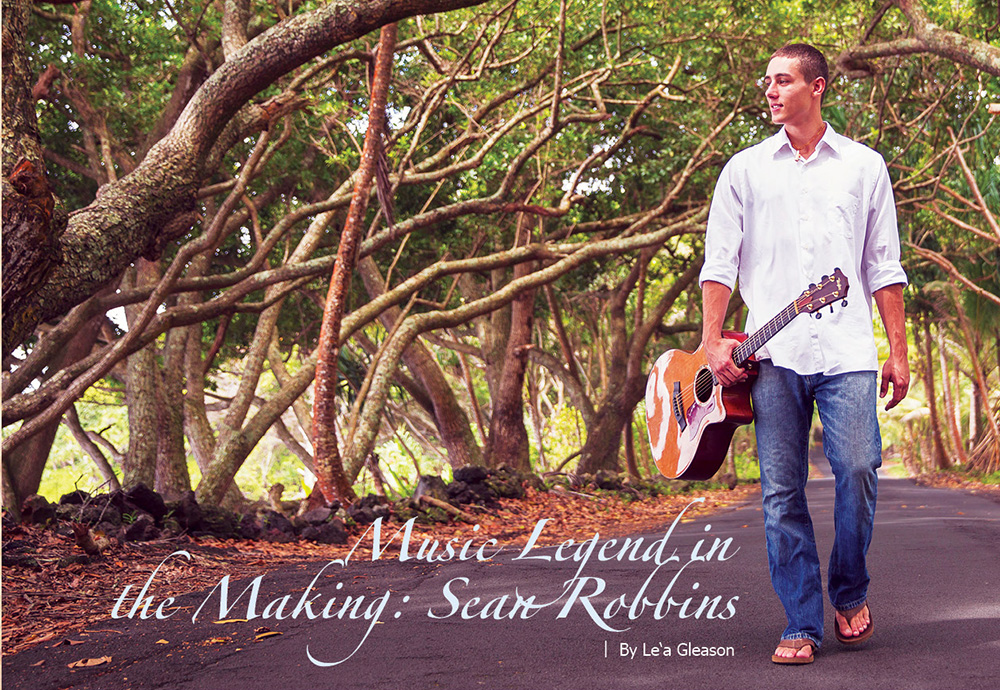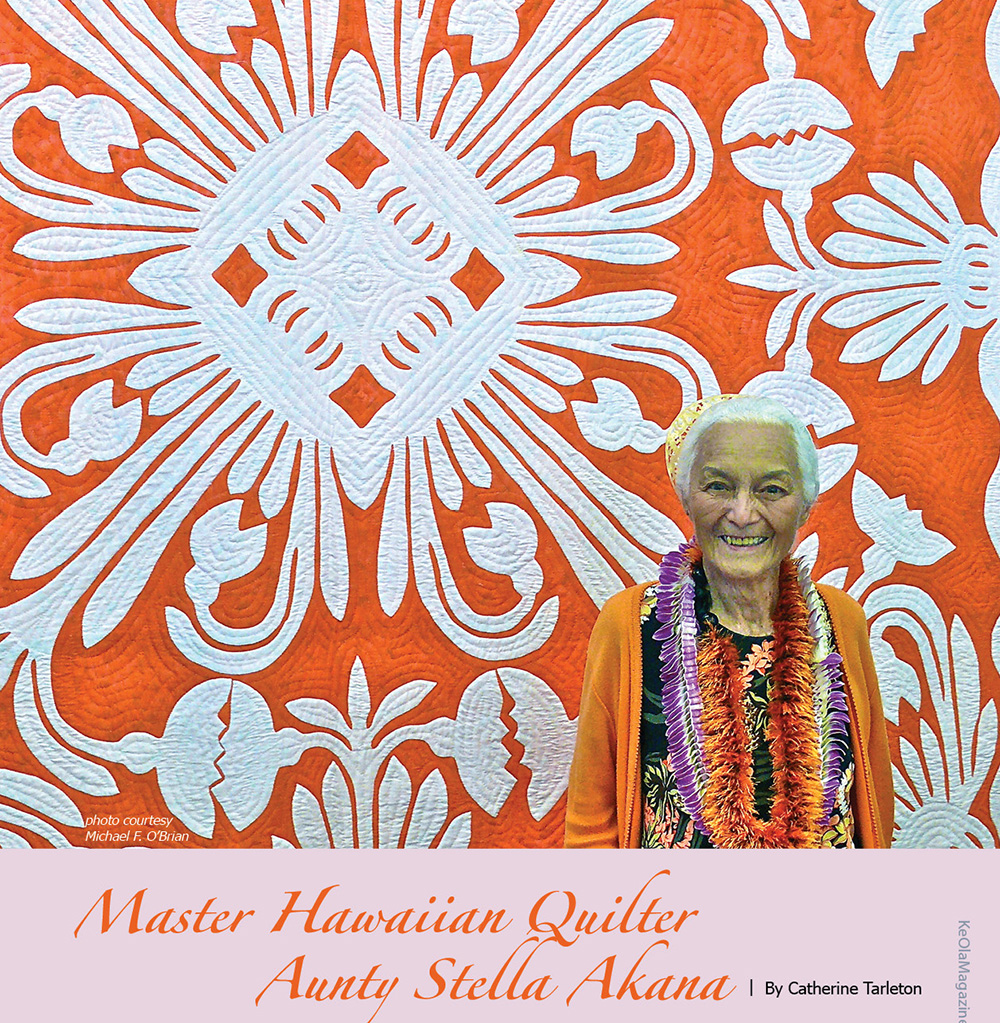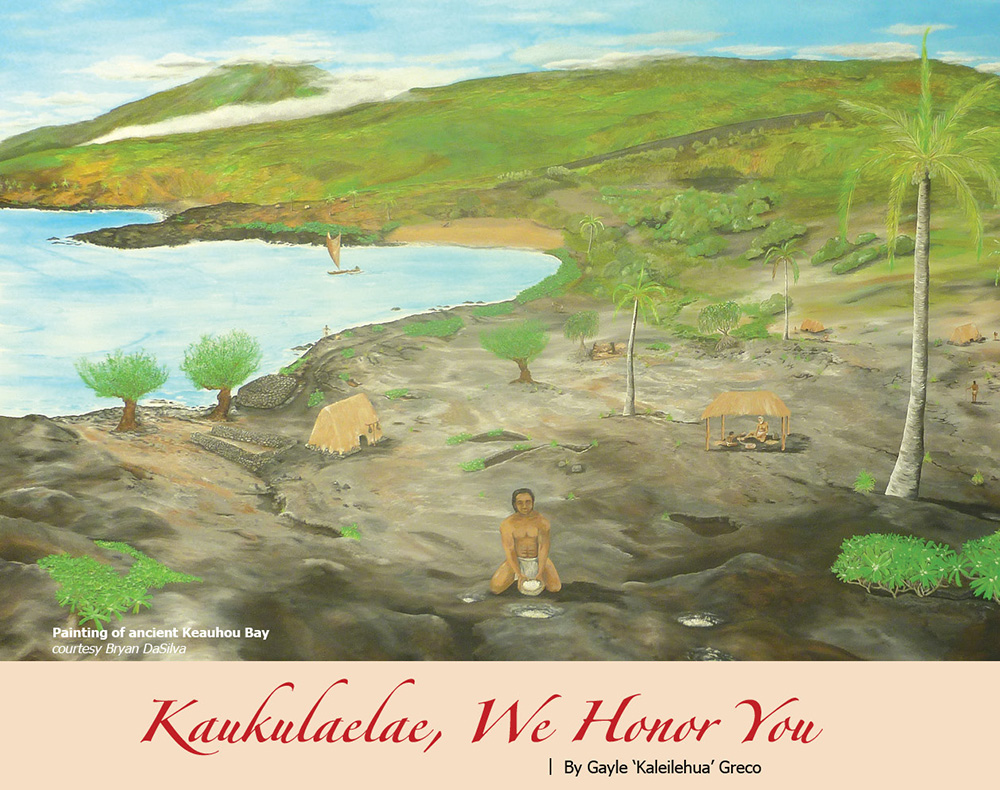
Music Legend in the Making: Sean Robbins

By Le‘a Gleason
The article “The Secrets of Generations: How Slack Key Guitar Grew Community and Culture,” in the March-April 2014 Ke Ola, referenced slack key guitar as “the secrets of generations.” In days past, celebrated music legend Gabby Pahinui would have protected his unique style of music by slacking all of the strings of his guitar after playing and hiding it in the closet.
That didn’t stop his son, the great Cyril Pahinui from picking it up anyway.
Cyril was quoted in the article, “In those days, we didn’t get music lessons, and most of the musicians I knew didn’t read music…That was the style in the old days; if you really wanted to learn, you had to listen.”
Such is still the style today—students watch and learn, rather than being told how exactly to play the music.
What has changed is the penchant for preserving the art of slack key guitar, where what was once a secret is now openly shared so that the culture of song and story will remain alive.
This was the case with the young Sean Robbins, a 14-year-old lanky kid with a mop of curly blonde hair who first picked up the guitar at his uncle’s house near Honoli‘i Beach in Hilo on a whim.
“The summer [before] I was going into Pāhoa High School—I have an uncle [who’s] musical and plays guitar—I would go over there and decided I wanted to learn to play guitar, not thinking anything of it,” he says.
The following year, he auditioned for Pāhoa High School’s Na Pua Mae‘ole o Pahoa Hawaiian Music Ensemble and it just so happened they needed a guitar player. So, he played the little bit of slack key guitar he knew.
Slack key guitar, or kī hō‘alu, means “loosen the key.” Traditionally, it refers to slacking or loosening the strings of a guitar to change the tuning to create a different sound.
Listening to Sean Robbins, just a few years later, it doesn’t matter what slack key is or is not. It only matters that his music is soothing on a soul level—so perfectly melodic that his music somehow weaves its way inside you in a graceful dance between storyteller and audience.
Sean’s love for slack key deepened through a connection to the Keli‘iho‘omalu family of Kaimū shortly after joining the music ensemble.
“From that introduction I ended up down in Kaimū six out of seven days of the week. Every day after school I’d be down there, every weekend, all throughout the summer. The whole family is very musical—it would be nonstop Hawaiian music all night. It was very inspirational,” Sean says.
Soon after, he met Cyril.
“I met him at a workshop, and maybe he was impressed by something about me, but every time he would come back to Hawai‘i Island, we would play together, and eventually, he started flying me up to O‘ahu,” Sean says.
Cyril is Sean’s connection to the era of Hawaiian music so treasured by those who play slack key. He’s the one who sat around the backyard fire every night with dad Gabby and friends. He’s the one who actually remembers what it was like.
And in his teaching, Cyril is traditional.
“Uncle Cyril is somewhat old-school; when you take a class from him, basically that consists of sitting down and watching him play guitar, and he’s just gonna sing his songs like he always does. It’s a very Hawaiian way of learning anything. You sit down and you watch and try to do it,” Sean says.
As his skills grew, so did his love for Hawaiian music. Sean began studying the language in high school and eventually set out to become fluent so he could write songs in Hawaiian.
At 16, he was selected to perform on National Public Radio’s “From the Top” and received the Jack Kent Cooke Young Artist Award. The money from his award bought him the guitar he currently plays and became the seed money for his album, just released digitally November 1.
In the beginning, though, this was not the plan.
“It just never occurred to me how big this opportunity was that was sitting right in front of me. It was just, oh, that’s awesome guitar playing, and I want to do that. At 14, I wasn’t seeing this as a career. It was nothing more than, this is what I like to do” he says.
When high school graduation came around, Sean says something shifted. There was something about the music that spoke to him.
“I just love the sound and the feeling of it. To me it’s very raw. I love finding slack key artists [where] it’s just the guitar and the voice and that’s it. There’s so much coming out of that one guitar or one person. I’ve found that’s what people who are just being introduced to slack key guitar trip out about—all that is coming from one guitar player,” he says.
At 20 now, Sean has worked hard to transform into the working musician he is today. He’s taller, more mature, wears his hair short, and speaks fluent Hawaiian, something he picked up in the Hawaiian Studies program at the University of Hawai‘i at Hilo.
“There’s a big jump between a musician and someone who makes money at being a musician. I decided this is what I was going to do, and said, ‘okay I’m going to make this happen.’ I started learning anything I could about the music business and tried to book myself around Hilo,” he says.
Of the 12 songs on his album, 11 are originals. The album is inspired by the ‘āina, or land, as Sean feels a strong connection to the places that reared his love of music.
“One of my favorite songs on the album is ‘Kaimū I Ka ‘Olu.’ I’d been wanting to write a Kaimū song for a long time because it’s one of my favorite places; I have so many good memories there and so much learning happened for me there. It talks about my love for Kaimū and the appreciation I have for everyone down there who has given me this love for Hawaiian music,” he says.
For Sean, performing his original songs brings back the love of the place or thing the song is about.
“It was a huge thing to be able to put out my own original music. My musical life started with guitar but as much as I love guitar I equally love kākau mele or Hawaiian songwriting,” he says.
It’s the joy of performing, and sharing that experience with others.
“I love performing for people and seeing the music bring joy to people. I love where it’s taken me. Through music alone I’ve gotten to go to all these incredible places, meet awesome people, and do awesome things. More specifically for my own song writing, I love that I can capture whatever feeling I was having at that moment…and go and record it or get it on the radio…it’s a cool feeling to have something personal like that, that you created, and put it out there for people to enjoy,” he says.
Walking down the beach with a friend recently, Sean heard one of his songs on KAPA Radio.
“It’s getting a little bit more normal, but it’s still very strange,” he says, “I walked past and caught it and the guitar sounded familiar, and my friend looked at me like, oh it’s my song.”
Today, Sean is part storyteller, part musician, and part historian. He preserves language and culture through an art that’s no longer secret, and widely shared.
“At a certain point it definitely becomes a responsibility whether you realize it or not. I did not realize it for a long time, and I’m just starting to understand that you have this responsibility to perpetuate it, and to pass it on to the next generation. You hear the stories about Gabbysʻ guys not wanting to show anyone their tuning—that was the kind of mindset back then. Somewhere around Uncle Cyril’s time it had to switch, otherwise it was going to be lost,” he says.
While most kids anticipate turning 21 for other reasons, for Sean it’s so he can arrive at gigs and have no trouble entering the bar.
He’s never really acted like a kid, though. His parents, although supportive, have taken a backseat to their goal-oriented son who says he just “saw what he wanted and went for it.” He never really needed anyone else to do it for him.
“There’s definitely a lot of sacrifices that go into it, so when you do have these small or big successes, they all add up. I never really stop to fully appreciate it because I’m always moving on to the next thing, but I’m super grateful for where music has taken me,” he says.
It’s the sweet and simple melodies of his falsetto voice and his beautifully precise guitar picking that make Sean Robbins, prodigy of the great Cyril Pahinui, way more than just a kid. ❖
Contact Sean Robbins
Contact writer Le‘a Gleason


